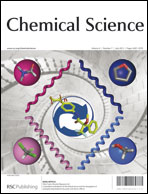The progress in imaging instrumentation and probes has revolutionized the way biologists look at living systems. Current tools enable both observation and quantification of biomolecules, allowing the measurement of their complex spatial organization and the dynamic processes in which they are involved. Here, we report reversible photoconversion in the Spinach system, a recently described fluorescent probe for RNA imaging. Upon irradiation with blue light, the Spinach system undergoes photoconversion to a less fluorescent state and fully recovers its signal in the dark. Through thermodynamic titration, stopped-flow, and light-jump experiments, we propose a dynamic model that accounts for the photochemical behavior of the Spinach system. We exploit the dynamic fluorogen exchange and the unprecedented photoconversion properties in a non-covalent fluorescence turn-on system to significantly improve signal-to-background ratio during long-term microscopy imaging.
You have access to this article
 Please wait while we load your content...
Something went wrong. Try again?
Please wait while we load your content...
Something went wrong. Try again?


 Please wait while we load your content...
Please wait while we load your content...